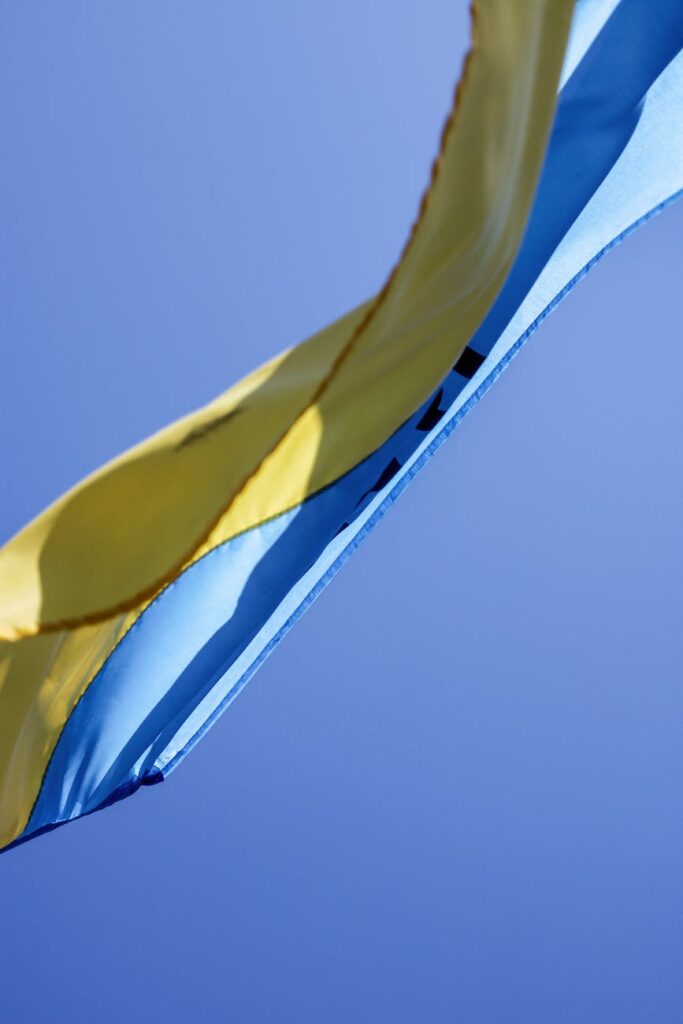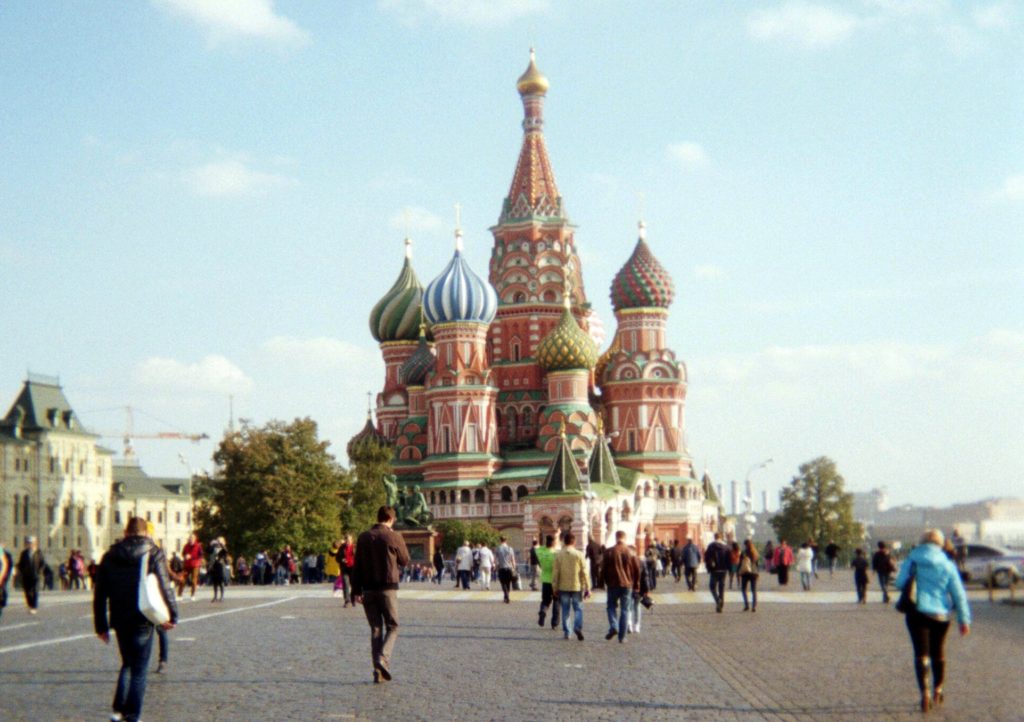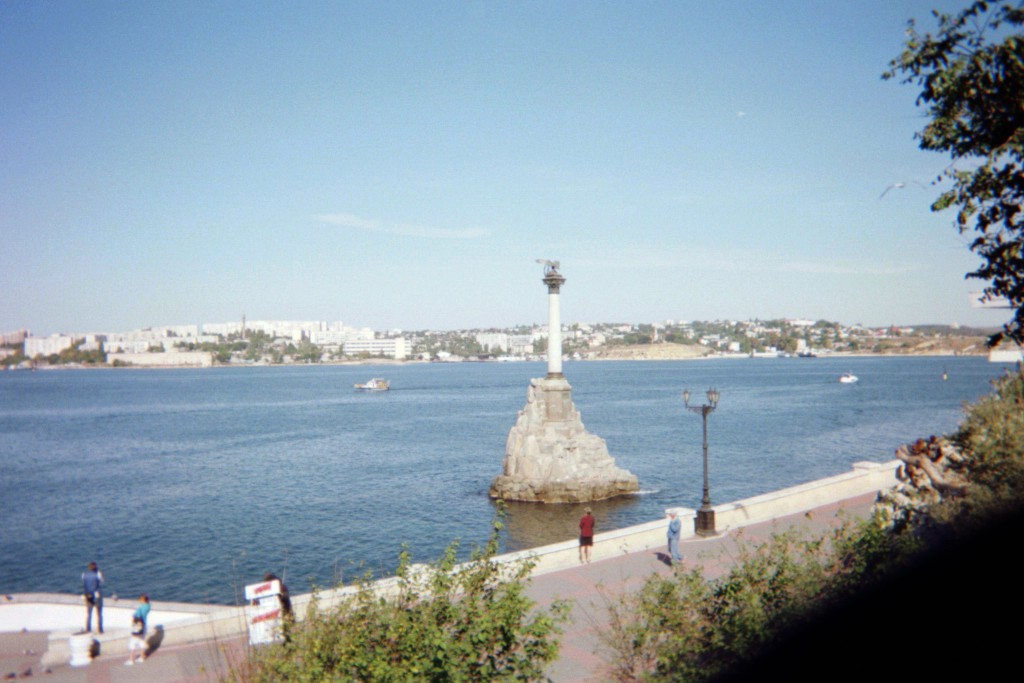
By Medea Benjamin & Nicolas JS Davies, CommonDreams, 2/21/23
With the Ukraine war now reaching its one-year mark on Feb. 24, the Russians have not achieved a military victory but neither has the West achieved its goals on the economic front. When Russia invaded Ukraine, the United States and its European allies vowed to impose crippling sanctions that would bring Russia to its knees and force it to withdraw.
Western sanctions would erect a new Iron Curtain, hundreds of miles to the east of the old one, separating an isolated, defeated, bankrupt Russia from a reunited, triumphant and prosperous West. Not only has Russia withstood the economic assault, but the sanctions have boomeranged — hitting the very countries that imposed them.
Western sanctions on Russia reduced the global supply of oil and natural gas, but also pushed up prices. So, Russia profited from the higher prices, even as its export volume decreased. The International Monetary Fund (IMF) reports that Russia’s economy only contracted by 2.2 percent in 2022, compared with the 8.5 percent contraction it had forecast, and it predicts that the Russian economy will actually grow by 0.3 percent in 2023.
On the other hand, Ukraine’s economy has shrunk by 35 percent or more, despite $46 billion in economic aid from generous U.S. taxpayers, on top of $67 billion in military aid.
European economies are also taking a hit. After growing by 3.5 percent in 2022, the Euro area economy is expected to stagnate and grow only 0.7 percent in 2023, while the British economy is projected to actually contract by 0.6 percent. Germany was more dependent on imported Russian energy than other large European countries so, after growing a meager 1.9 percent in 2022, it is predicted to have negligible 0.1 percent growth in 2023. German industry is set to pay about 40 percent more for energy in 2023 than it did in 2021.
The United States is less directly impacted than Europe, but its growth shrank from 5.9 percent in 2021 to 2 percent in 2022, and is projected to keep shrinking, to 1.4 percent in 2023 and 1 percent in 2024. Meanwhile India, which has remained neutral while buying oil from Russia at a discounted price, is projected to maintain its 2022 growth rate of over 6 percent per year all through 2023 and 2024. China has also benefited from buying discounted Russian oil and from an overall trade increase with Russia of 30 percent in 2022. China’s economy is expected to grow at 5 percent this year.
Other oil and gas producers reaped windfall profits from the effects of the sanctions. Saudi Arabia’s GDP grew by 8.7 percent, the fastest of all large economies, while Western oil companies laughed all the way to the bank to deposit $200 billion in profits: ExxonMobil made $56 billion, an all-time record for an oil company, while Shell made $40 billion and Chevron and Total gained $36 billion each. BP made “only” $28 billion, as it closed down its operations in Russia, but it still doubled its 2021 profits.
As for natural gas, U.S. LNG (liquefied natural gas) suppliers like Cheniere and companies like Total that distribute the gas in Europe are replacing Europe’s supply of Russian natural gas with fracked gas from the United States, at about four times the prices U.S. customers pay, and with the dreadful climate impacts of fracking. A mild winter in Europe and a whopping $850 billion in European government subsidies to households and companies brought retail energy prices back down to 2021 levels, but only after they spiked five times higher over the summer of 2022.
While the war restored Europe’s subservience to U.S. hegemony in the short term, these real-world impacts of the war could have quite different results in the long term. French President Emmanuel Macron remarked,
“In today’s geopolitical context, among countries that support Ukraine, there are two categories being created in the gas market: those who are paying dearly and those who are selling at very high prices… The United States is a producer of cheap gas that they are selling at a high price… I don’t think that’s friendly.”
An even more unfriendly act was the sabotage of the Nord Stream undersea gas pipelines that brought Russian gas to Germany. Seymour Hersh reported that the pipelines were blown up by the United States, with the help of Norway — the two countries that have displaced Russia as Europe’s two largest natural gas suppliers. Coupled with the high price of U.S. fracked gas, this has fueled anger among the European public. In the long term, European leaders may well conclude that the region’s future lies in political and economic independence from countries that launch military attacks on it, and that would include the United States as well as Russia.
[Related: German Lawmaker Calls for Nord Stream Probe]
The other big winners of the war in Ukraine will of course be the weapons makers, dominated globally by the U.S. “big five”: Lockheed Martin, Boeing, Northrop Grumman, Raytheon and General Dynamics. Most of the weapons so far sent to Ukraine have come from existing stockpiles in the United States and NATO countries. Authorization to build even bigger new stockpiles flew through Congress in December, but the resulting contracts have not yet shown up in the arms firms’ sales figures or profit statements.
The Reed-Inhofe substitute amendment to the FY2023 National Defense Authorization Act authorized “wartime” multi-year, no-bid contracts to “replenish” stocks of weapons sent to Ukraine, but the quantities of weapons to be procured outstrip the amounts shipped to Ukraine by up to 500-to-1. Former senior OMB official Marc Cancian commented, “This isn’t replacing what we’ve given [Ukraine]. It’s building stockpiles for a major ground war [with Russia] in the future.”
Since weapons have only just started rolling off production lines to build these stockpiles, the scale of war profits anticipated by the arms industry is best reflected, for now, in the 2022 increases in their stock prices: Lockheed Martin, up 37 percent; Northrop Grumman, up 41 percent; Raytheon, up 17 percent; and General Dynamics, up 19 percent.
While a few countries and companies have profited from the war, countries far from the scene of the conflict have been reeling from the economic fallout. Russia and Ukraine have been critical suppliers of wheat, corn, cooking oil and fertilizers to much of the world. The war and sanctions have caused shortages in all these commodities, as well as fuel to transport them, pushing global food prices to all-time highs.
So the other big losers in this war are people in the Global South who depend on imports of food and fertilizers from Russia and Ukraine simply to feed their families. Egypt and Turkey are the largest importers of Russian and Ukrainian wheat, while a dozen other highly vulnerable countries depend almost entirely on Russia and Ukraine for their wheat supply, from Bangladesh, Pakistan and Laos to Benin, Rwanda and Somalia. Fifteen African countries imported more than half their supply of wheat from Russia and Ukraine in 2020.
The Black Sea Grain Initiative brokered by the U.N. and Turkey has eased the food crisis for some countries, but the agreement remains precarious. It must be renewed by the U.N. Security Council before it expires on March 18, but Western sanctions are still blocking Russian fertilizer exports, which are supposed to be exempt from sanctions under the grain initiative. U.N. humanitarian chief Martin Griffiths told Agence France-Presse on Feb. 15 that freeing up Russian fertilizer exports is “of the highest priority.”
After a year of slaughter and destruction in Ukraine, we can declare that the economic winners of this war are: Saudi Arabia, ExxonMobil and its fellow oil giants, Lockheed Martin, and Northrop Grumman.
The losers are, first and foremost, the sacrificed people of Ukraine, on both sides of the front lines, all the soldiers who have lost their lives and families who have lost their loved ones. But also in the losing column are working and poor people everywhere, especially in the countries in the Global South that are most dependent on imported food and energy. Last but not least is the Earth, its atmosphere and its climate — all sacrificed to the God of War.
That is why, as the war enters its second year, there is a mounting global outcry for the parties to the conflict to find solutions. The words of Brazil’s President Lula da Silva reflect that growing sentiment. When pressured by President Joe Biden to send weapons to Ukraine, he said, “I don’t want to join this war, I want to end it.”
Medea Benjamin is co-founder of Global Exchange and CODEPINK: Women for Peace. She is the co-author, with Nicolas J.S. Davies, of War in Ukraine: Making Sense of a Senseless Conflict, available from OR Books in November 2022. Other books include, Inside Iran: The Real History and Politics of the Islamic Republic of Iran (2018); Kingdom of the Unjust: Behind the U.S.-Saudi Connection (2016); Drone Warfare: Killing by Remote Control (2013); Don’t Be Afraid Gringo: A Honduran Woman Speaks from the Heart (1989), and with Jodie Evans, Stop the Next War Now (2005).
Nicolas J. S. Davies is an independent journalist and a researcher with CODEPINK. He is the co-author, with Medea Benjamin, of War in Ukraine: Making Sense of a Senseless Conflict, available from OR Books and the author of Blood On Our Hands: the American Invasion and Destruction of Iraq.


